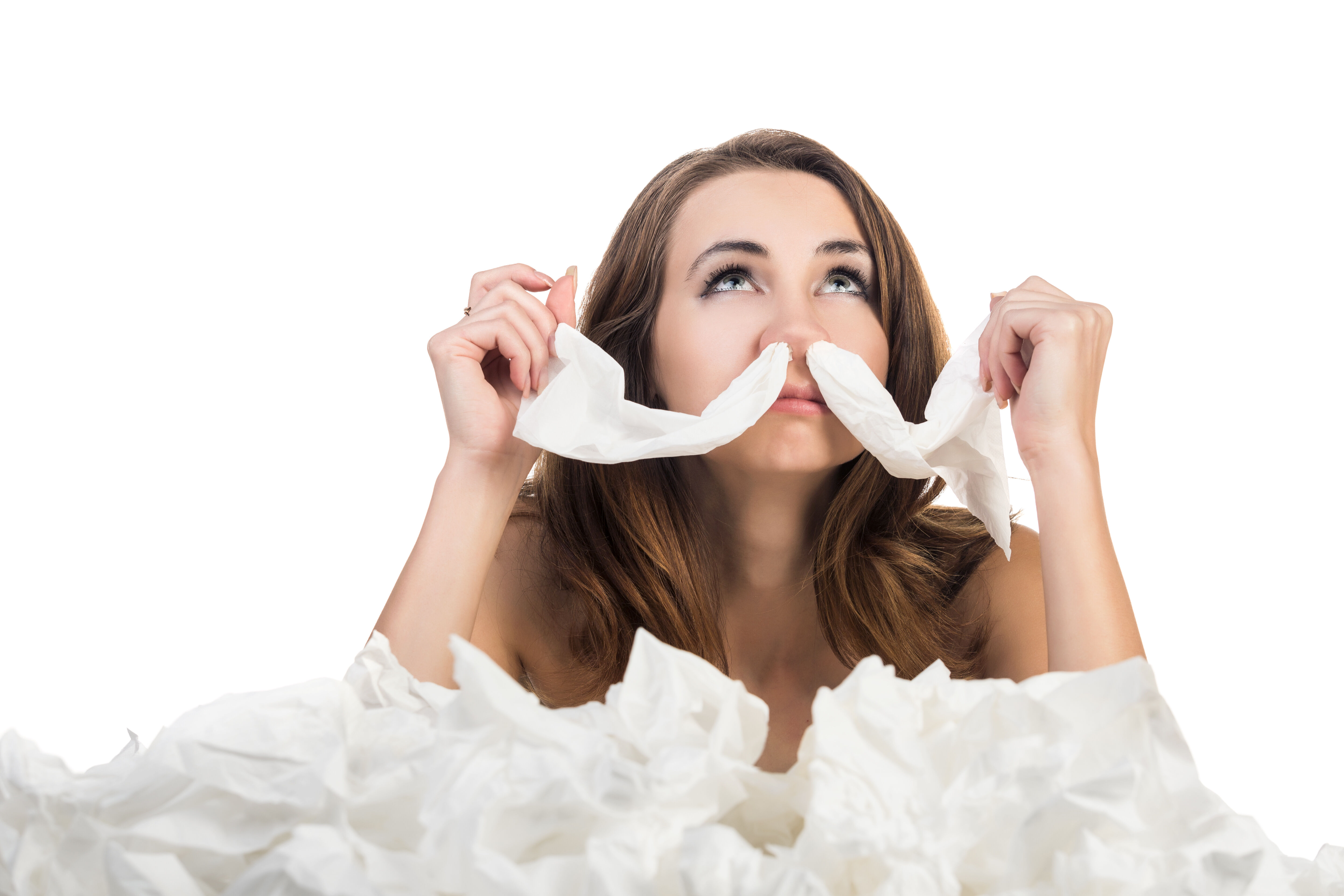Allergic rhinitis and conjunctivitis
- February 3, 2022
- by NATALIYA KUSHNIR
- Articles
What is Allergic Rhinitis?

If you have an allergic reaction to any environmental protein, and you experience allergy in the nose, this condition is called allergic rhinitis. This term is a medical diagnosis name for your nasal symptoms caused by an allergen.
More than 300 million individuals in industrialized countries suffer from allergic rhinitis. Rhinitis is a disease characterized by stuffy or runny nose, followed by red, itchy watering eyes and repeated sneezing. But more common problems for rhinitis patients are the overlooked social difficulties, with the majority reporting tiredness, feeling miserable or irritable. Often, medication is not able to adequately control symptoms and there is a need for other aids against the disease.
What is Allergic Conjunctivitis?
In fact, rhinitis and conjunctivitis are merely medical terms describing allergic inflammation of the nose and eyes. Most of the time, allergy does not stop at one organ. Rather it can present in different places (nose, eyes, skin, lungs) at different exposures and various times of the year.
Allergic conjunctivitis is an allergy inside the eyes. If the allergic inflammation happens under the eyelids, a conjunctiva (which is a soft mucosal part of the eyeball lining that goes from cornea to the edges of the eyelids) swells, gets red, and starts hurting. As there are no normal nerve receptors inside the eye, it usually feels like a “sand in the eye”.
Eyes are itchy and red due to histamine release – immune cells called mast cells try to “kill” the protein that got inside the eye and release histamine as “bullets”. Unfortunatelly, the protein of the cat hair or pollen is very stable and cannot be degraded by these immune cells. So, the longer such “intruder” sits inside the eye the more cells come in and keep releasing histamine and other active molecules that create inflammation.
What Happens During an Allergic Reaction?

During the first exposure an allergic sensitization could happen. An immune system that is designed to tolerate all proteins in our environment (immunologic tolerance) suddenly malfunctions. As a result, it gives the “command to kill” that specific protein. It can be a pollen, a cat protein, a dog hair or anything of protein form that gets in the nose, lungs or an eye, and contacts with the mucus layer.
During initial allergic sensitization there may be no allergic symptoms. Some patients may experience a flu-like condition, headache or somnolence.
The whole cascade of the allergic attack happens during every subsequent exposure. Now all the immune cells (B-cells, T-cells, eosinophils and mast cells) are engaged in the attack on the “intruder” protein. This is called IgE- mediated mast cell degranulation, or the release of histamine in the tissues after mast cells get activated by immunoglobulin (IgE) molecules that attached to few protein molecules.
What Are Allergy Triggers?
The proteins that cause allergic reactions in the nose and eyes are very small and usually micron-size. These are divided into indoor and outdoor, also by the time of exposure into seasonal and year-round.
Most common outdoor allergens:
- Grasses
- Trees
- Weeds
- Molds

Most common indoor allergens:
- Cat
- Dog
- Rodents
- Cochroaches
- Molds
- Dust mites

Causes
The cause of allergy is both – genetic predisposition and environment triggers. This is nowadays received the name of epigenetics – a transformation of gene activity by life influence. So, you may have genes that may or may not make you allergic. If you are exposed to a large amount of protein for a prolonged period of time – the genes get activated that allows for atopy (allergic state of the immune system) to start.
Symptoms
Symptoms are ranging from minimal to severe.
Allergic conjunctivitis:
- Itchy runny eyes
- Red eyes
- Goopy secretions on the eyelids and eyelashes
- Swelling and redness of the eyelids usually also present (allergic blepharitis)
- Skin folds under the eyes
Allergic rhinitis:
- Itchy nose, sneezing cascade
- Nasal creese (allergic salute)
- Runny nose – secretions can be from clear to yellow
- Congestion or nasal breathing blockage
- Postnasal drip and throat irritation
As allergy is so common, we can clearly recognize and diagnose people who have allergies by frequent profuse sneezing, swollen red eyes and nose and tons of paper tissue they have to use.

Treatment
Treatment is mainly symptomatic, unless the symptoms are unbearable and affect the quality of life too much.
Ways to stay away from allergens

Many measures for allergen reduction in your environment can be recommended by an allergist. The main goal is to figure out which allergens you need to avoid. Request an allergy testing which is an easy test that can tell you after just 30 min of a skin prick test what to avoid.
Nasal sprays and washes
Nasal wash is a very effective and natural way to remove the allergen and significantly reduce all symptoms. We recommend a device that was made as an analogy to yoga nasal irrigation – nasal wash NeilMed, designed by Dr Mehta.
After nasal irrigation you may use one of the nasal sprays containing antihistamine, a mast cell stabilizer or a mild steroid. There are also combo sprays that are available with prescription.
Oral medicines

Oral antihistamines are a popular choice. The unfortunate downside is wearing off of the effect due to frequent need for treatment. The cells just stop responding. You may switch to another type of antihistamine hoping that will help for a while.
Natural treatment
There are many natural remidies and treatments that can be helpful when fighting off allergies:
- Acupuncture
- Cupping
- Herbs
- Homeopathy
Allergen immunotherapy
Please read about allergen immunotherapy. This is a great method, especially if used as sublingual drops (SLIT). This is a safe and effective therapy that may help you to get rid of allergies for a long time.
What Can I Do To Prevent Allergies?

A recently reported small, out-of-season environmental exposure unit study found nasal filters to be efficacious in preventing seasonal allergic rhinitis (AR). However, nasal filters still need to show efficacy in a natural setting in a regular pollen season.
